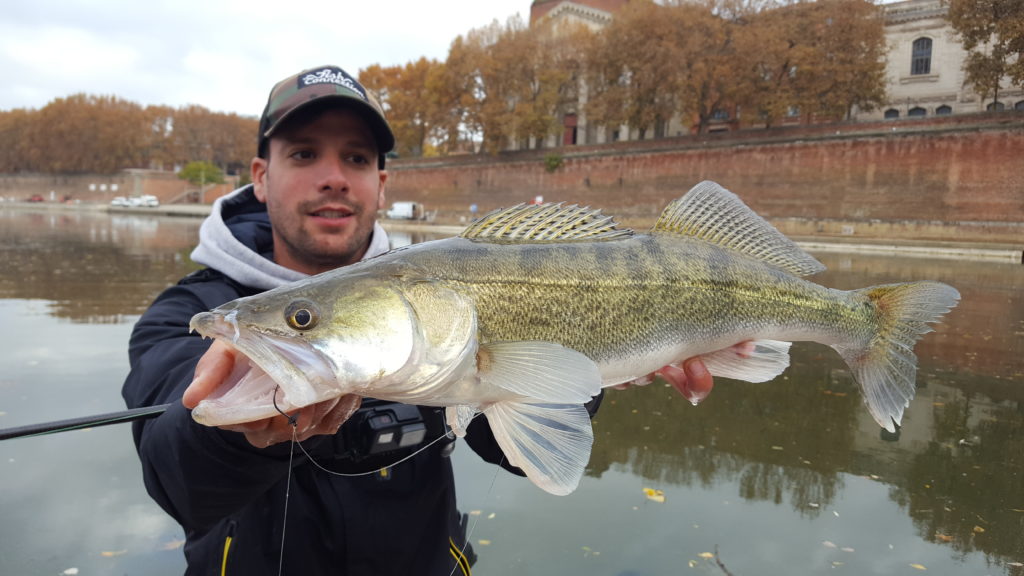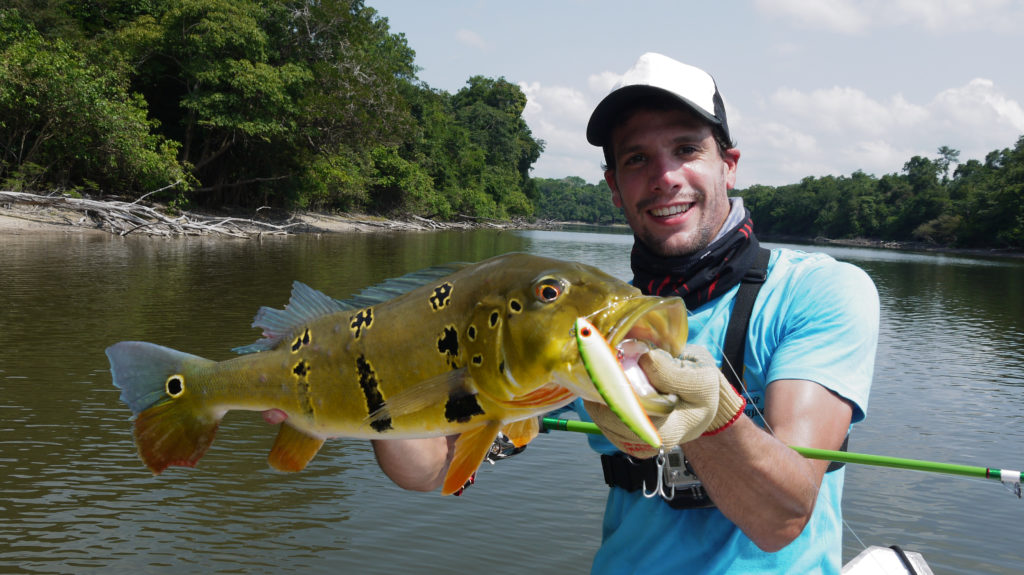
After thousands of hours spent at the water's edge and hundreds of tests, we're going to guide you to find out which trout lure is more relevant than another depending on the conditions and the environment. Whether you're a beginner or a keen angler, our guide will help you select the most effective lures for fishing one of the most emblematic fish in our rivers.
Our article in brief:
Discover our approach to knowing which lure to use for trout, depending on the conditions and the environment. Here are the key points to remember:
- 3 essential families of lures : Swimming fish, metal lures and soft lures
- Adapting to the fishing conditions is key to your success: season, weather, depth, water clarity, size of prey,
- Your lure box needs to be versatile to cope with all situations
- Adopt a responsible approach. That's the best way to preserve trout populations.
The essential lure categories for trout
If you're wondering which lure to choose for trout, we recommend that you focus on the following three main categories :
- Swimming fish
- Metal lures
- Soft lures
Each of these categories of lure offers specific advantages depending on the fishing conditions.
Swimming fish
The swimming fishJerkbaits, as their name suggests, are hard lures designed to imitate a fish that is one of the trout's natural prey. There are two main sub-families within the large family of swimming fish: jerkbaits and crankbaits.

The jerkbaits minnows are generally elongated and relatively thin with a short flap. They are designed to be driven by dry shots, interspersed with pauses. In contrast crankbaits minnows are rather round, compact, with a longer lip. They are designed for faster casting and retrieving by hitting the rocks close to the bottom and triggering reflex attacks in the trout.
Opt for models measuring between 40 and 110 mm. Natural colours such as minnow or gudgeon are excellent in clear water, while flashy shades (gold, silver, chartreuse/orange) prove formidable in murky water.
Metal lures
The metal luressuch as swivel spoons and undulatingThese are great values for trout fishing. Choose sizes 1 to 3, mainly in gold and silver.
These colours and sizes make them ideal prey for trout, who will mistake them for a minnow, for example. These lures are particularly effective in fast currents, in deep water for the undulating lure and in flats from 6cm to 1 metre deep for the classic spoon.

If you fish upstream, Bring your rod back high and fast to trigger active trout. If you fish downstream, bring it back more slowly and with a lower cane.
Soft lures
Finally, don't overlook the category of soft lures for trout fishing. These lures are the perfect addition to your tackle box for all situations. Mounted on a 2 to 8 gram lead head, these 2.5 to 9 cm lures are ideal for a more discreet and natural approach close to the bottom.

Adapt your lure to the fishing conditions
The success of your fishing session will depend on your ability to choose the right lure at the right time. Here are the main factors to consider in our opinion:
- The depth and current of the river
- The clarity of water
- The size of natural prey present in the environment
- The configuration of the spotlight in front of you
We strongly advise you to take a close look at the biotope and the river before making your choice.
For example, in clear, shallow water, a small swimming fish in natural colours will often be more effective than a big flashy spoon.
Don't forget that observation of the environment is just as important as the choice of lure. Trout often have preferential spots depending on their habits and the time of day. Identifying these key areas will enable you to adapt your technique and choice of lure accordingly.
Building a versatile lure box for trout
To be ready for any situation, we recommend you put together a varied selection of lures. Here's an example of a versatile lure box for trout:
| Type of lure | Quantity | Colours |
|---|---|---|
| Swimming fish | 3 | Natural, Gold, Chartreuse, fluorescent |
| Revolving spoons | 3 | Gold, Silver, Copper |
| Wobbling spoons | 3 | Gold, Silver, Red/White |
| Soft lures | 3 | Natural worm, Yellow larva, Black insect |
If you're a beginner and don't know which lure to choose for trout, this selection will enable you to adapt to most situations encountered in the field. Don't hesitate to experiment and adjust your choice according to your past experience on the water.
How can you exploit the potential of your trout lures?
Here are our recommendations for getting the most out of your trout lures:
- Vary your recoveries Alternate between fast, slow, jerky and linear recoveries to find the one that triggers the attack.
- Target positions Focus on the shadows, eddies and obstacles where trout like to hide. Here's a dedicated article to help you find out where to fish for trout.
- Adapt your swimming depth : Use your full range of lures to target all types of water, from the deepest areas to the flats.
- Take care with your approach Discretion is the key to successful trout fishing. So be discreet! Avoid clothing that stands out from the surroundings and take care not to cast your shadow on the water.
By varying your lures and your approach, we are convinced that you will succeed in catching magnificent brown trout, whatever the conditions.
Remember that trout fishing is above all a question of patience and adaptation. Even with the best lures on the market, you need to observe, learn and constantly adjust to changing river conditions.

Preserving the resource: a priority for all responsible fishermen
As fans of this fish, we are keen to preserve its population and habitat. Here are a few good practices to adopt both on and off the water:
- Use barbless hooks as often as possible. This makes catch-and-release easier and avoids any fatal injuries caused by barbed hooks.
- Handle trout with care. Wet your hands before handling and use a fine-mesh landing net, preferably made of rubber as it is non-abrasive on trout skin.
- Limit time out of the water when taking photos
- Practice no-kill as often as possible
- Don't hesitate to take part in cleaning up riverbanks and restoring ecosystems.
These simple, but hugely important actions help to maintain healthy trout populations and guarantee the pleasure of fishing for future generations. That's one of the key messages we share on our website, advocating respectful and sustainable fishing.
Ultimately, knowing which lure to choose for trout is a subtle blend of technique, observation and experience. With the advice we've shared with you, you're now armed to select the lures best suited to your fishing conditions. Remember, practice makes perfect. So don't hesitate, get your tackle ready and set off on an adventure along our magnificent rivers!




